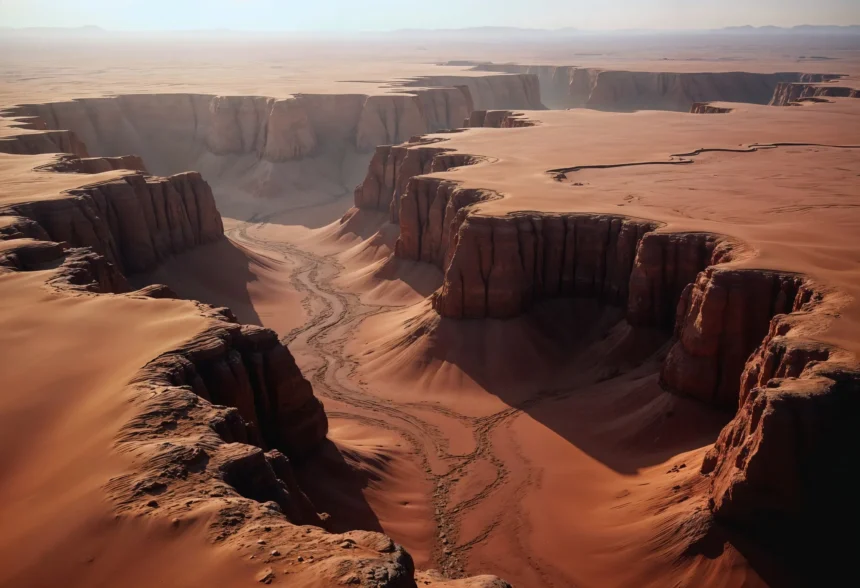🗺️ 10 Deepest Canyons in the World
Canyons are nature’s breathtaking masterpieces, formed over millions of years through erosion, tectonic activity, and the relentless flow of rivers. While the Grand Canyon is the most famous, many others surpass it in depth. Canyons are among the most dramatic landscapes on Earth, sculpted by rivers, erosion, tectonic shifts, and volcanic activity over millions of years.
Exploring the world’s deepest canyons offers a glimpse into Earth’s geological history and showcases nature’s unparalleled artistry. These colossal formations, carved over millennia, are testaments to the relentless forces of erosion and tectonic activity. In this comprehensive exploration, we delve into the ten deepest canyons on our planet, uncovering their unique characteristics, geological significance, and rich biodiversity.
Below, we dive into the 10 deepest canyons in the world, revealing their geological wonders, unique ecosystems, and cultural significance.
1. Yarlung Tsangpo Grand Canyon, Tibet, China
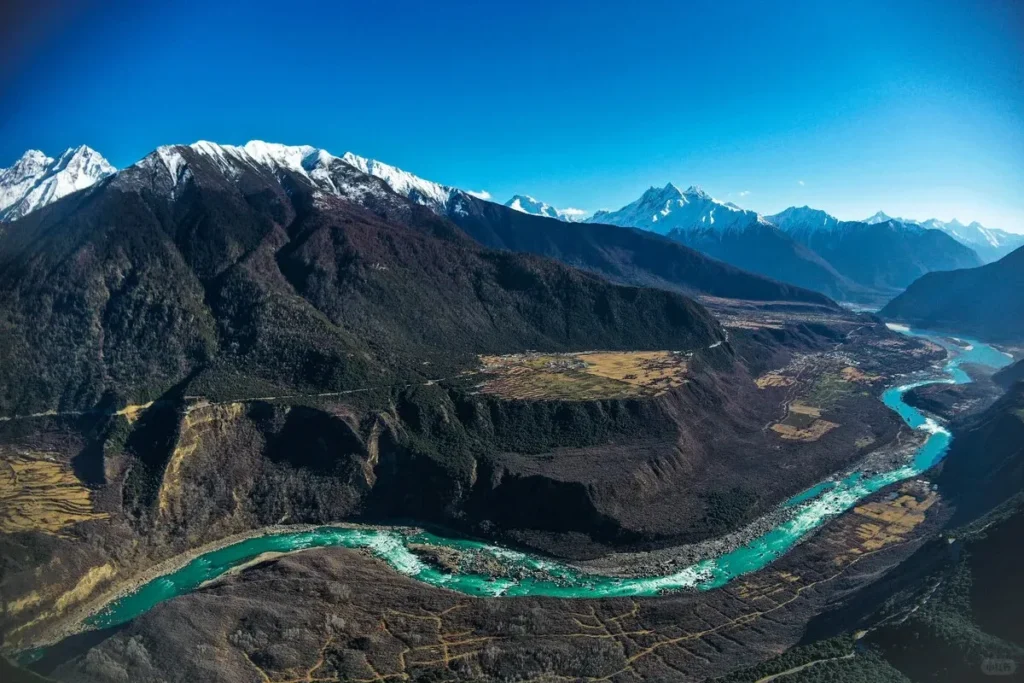
🗻 Depth: 6,009 meters (19,714 feet)
🌍 Location: Tibet, China
📏 Length: 504.6 km (313.5 miles)
The Deepest Canyon on Earth:
The Yarlung Tsangpo Grand Canyon holds the title of the deepest canyon on Earth, surpassing the Grand Canyon by a staggering margin. This colossal canyon follows the winding Yarlung Tsangpo River, which originates from the Himalayas and carves its way through Tibet before becoming the Brahmaputra River.
This canyon is unique because of its dramatic altitude changes—it descends from the towering Mount Namcha Barwa (7,782 meters) down into a lush valley, creating a diverse ecosystem. The canyon features rainforests, glaciers, and hidden waterfalls, making it a hotspot for biodiversity. Some of the world’s most endangered species, including the snow leopard and giant panda, call this region home.
For explorers, the rugged terrain, unpredictable weather, and remote location make this canyon one of the most challenging places to visit. However, it remains an untamed natural wonder, offering breathtaking scenery and rich Tibetan culture.
2. Kali Gandaki Gorge, Nepal
🗻 Depth: Over 6,000 meters (19,685 feet)
🌍 Location: Nepal
📏 Length: 120 km (75 miles)
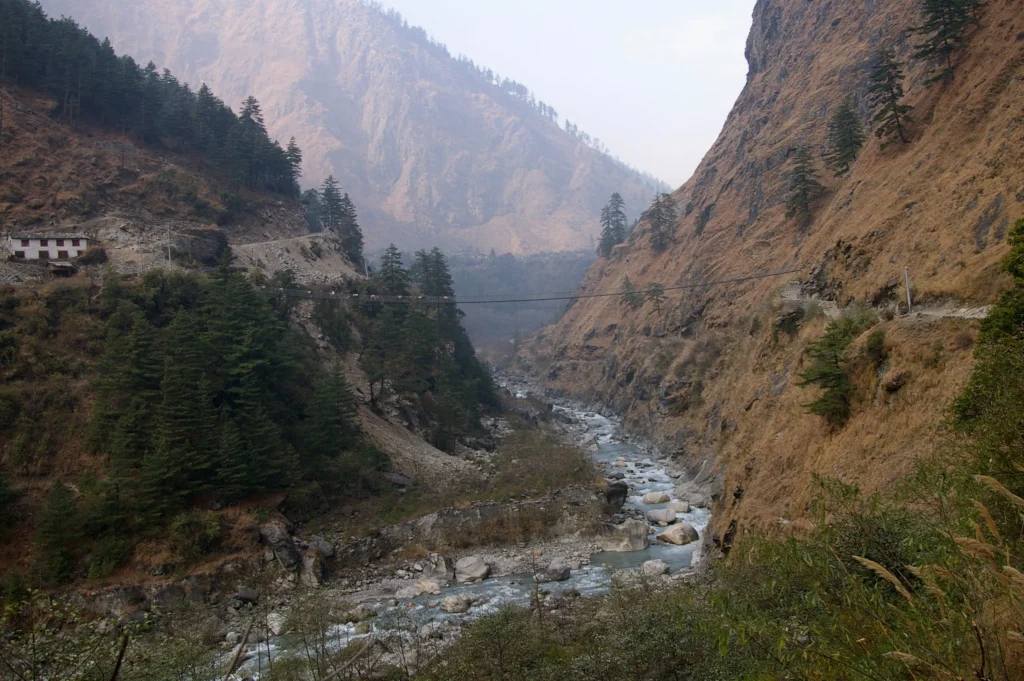
The Gorge That Split the Himalayas:
Kali Gandaki Gorge is not only one of the deepest gorges in the world, but it is also among the most sacred and historically significant. Nestled between two Himalayan giants—Dhaulagiri (8,167 meters) and Annapurna (8,091 meters)—this canyon was formed by the Kali Gandaki River, which existed even before the Himalayas rose due to tectonic movements.
The river cut through the rising mountains, creating a dramatic depth that now exceeds 6,000 meters from summit to valley. This region is a major part of the Annapurna Circuit, one of the world’s most famous trekking routes.
What sets Kali Gandaki apart is its spiritual significance. The river is sacred to both Hindus and Buddhists, and along its path, you’ll find ancient monasteries, chortens (Buddhist stupas), and prayer flags fluttering in the wind. The area is also famous for the Shaligram fossils (ancient marine fossils considered sacred in Hinduism).
Beyond its cultural importance, the gorge is a biodiversity hotspot, home to species such as Himalayan tahr, langurs, and blue sheep.
3. Indus Gorge, Pakistan
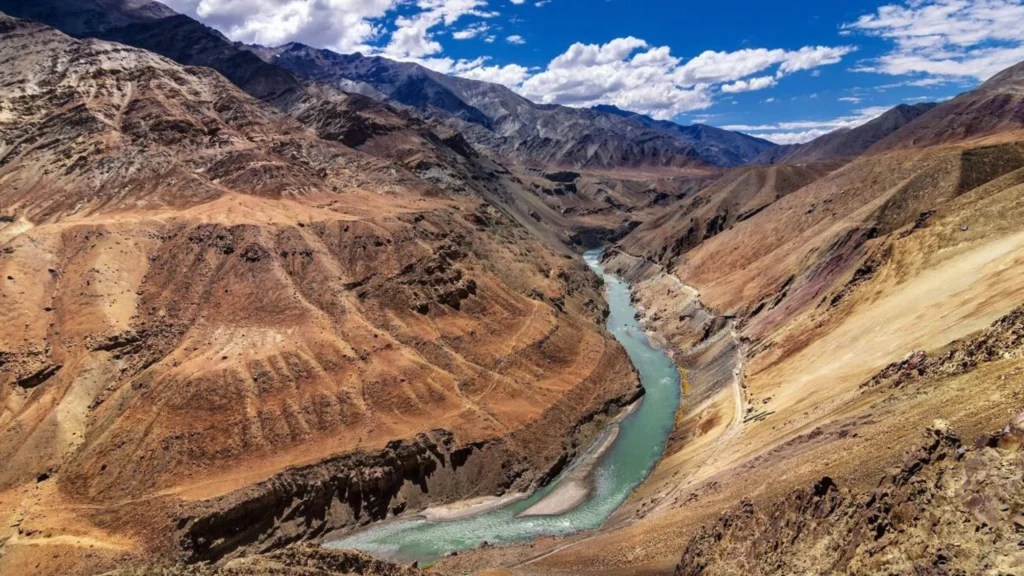
🗻 Depth: 4,500–5,200 meters (14,764–17,060 feet)
🌍 Location: Pakistan
📏 Length: 370 km (230 miles)
Where the Indus Meets the Himalayas:
The Indus Gorge is one of the world’s least explored yet most geologically significant canyons. The Indus River, one of Asia’s longest and most historic rivers, cuts through this massive gorge as it flows past Nanga Parbat (8,126 meters), the world’s ninth-highest mountain.
This canyon was formed millions of years ago as the Indian and Eurasian tectonic plates collided, leading to the uplift of the Himalayas. The sheer vertical drops of the Indus Gorge are some of the most dramatic on the planet, making it an area of interest for geologists and adventure seekers alike.
The rugged terrain and extreme remoteness make this canyon one of the least accessible in the world. However, for those who dare to explore, it offers breathtaking, untouched landscapes and an experience of raw nature in its most powerful form.
The gorge is home to rare wildlife, including the Himalayan brown bear, snow leopards, and ibex, all of which navigate the steep slopes of this rugged environment.
4. Cotahuasi Canyon, Peru
🗻 Depth: 3,354 meters (11,004 feet)
🌍 Location: Peru
📏 Length: 100 km (62 miles)
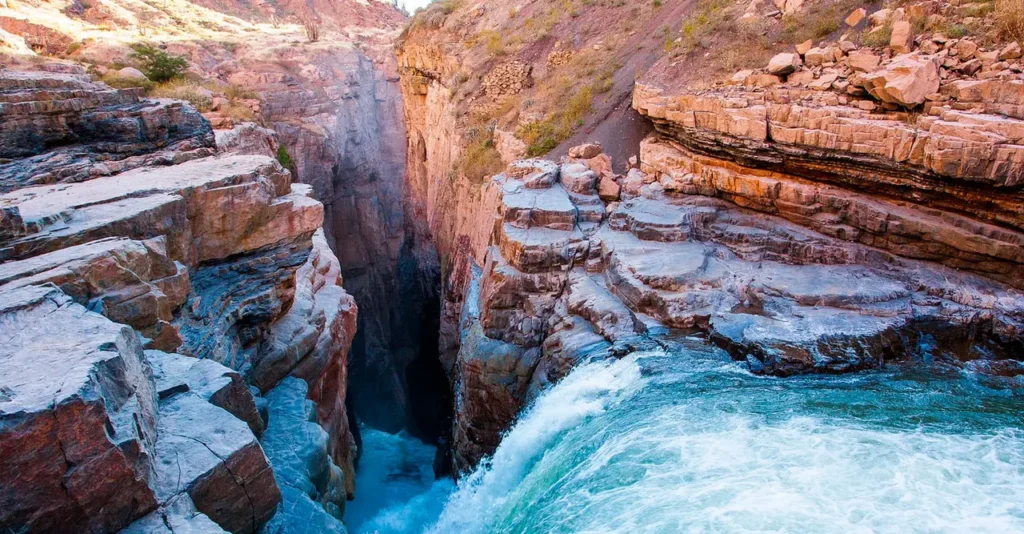
The Grand Canyon’s Deeper Cousin:
While the Grand Canyon is world-famous, Cotahuasi Canyon is actually deeper! Often called Peru’s “Forgotten Canyon,” Cotahuasi reaches depths of 3,354 meters (11,004 feet), making it one of the deepest canyons in the world.
Located between two volcanic mountain ranges (Coropuna and Solimana), this canyon was carved by the Cotahuasi River over millions of years. The region is rich in ancient history, with remnants of the pre-Inca and Inca civilizations, including agricultural terraces, stone trails, and archaeological sites.
What makes Cotahuasi Canyon unique is its biodiversity and extreme climate contrasts. The canyon walls rise from lush green valleys at the bottom to high-altitude deserts at the top. It is home to giant hummingbirds, condors, and rare orchids.
The canyon remains off the beaten path, making it a perfect destination for adventurers looking for unspoiled landscapes. Hiking through Cotahuasi feels like stepping back in time, with hidden waterfalls, ancient terraces, and stunning geological formations at every turn.
5. Colca Canyon, Peru
🗻 Depth: 3,270 meters (10,725 feet)
🌍 Location: Peru
📏 Length: 70 km (43 miles)
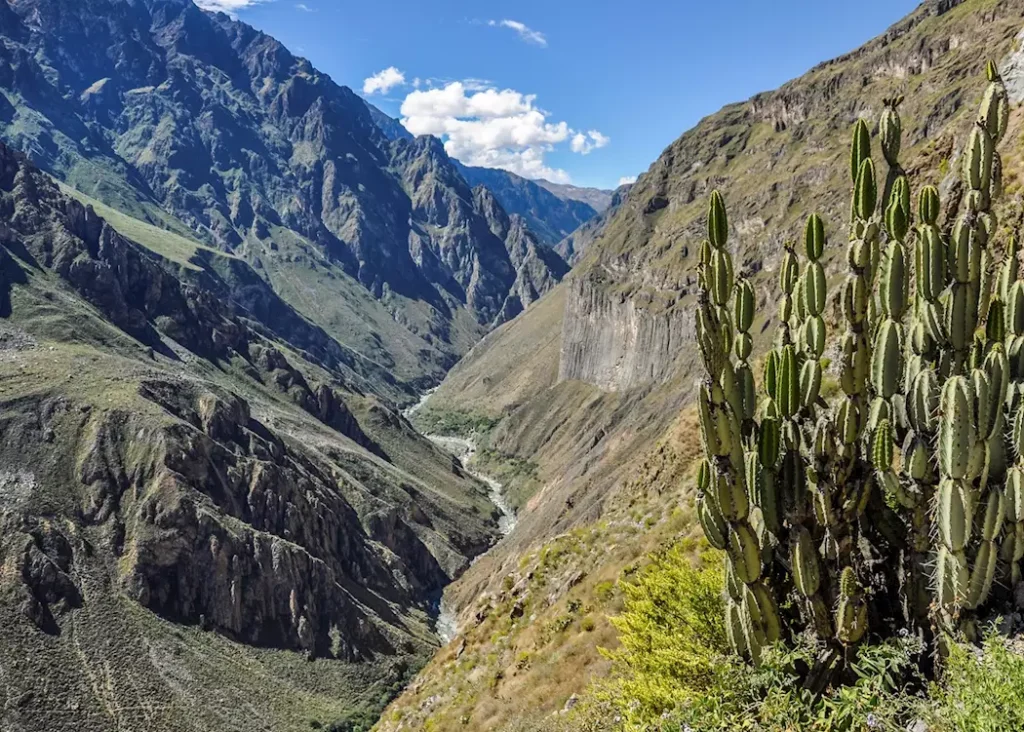
The Land of the Andean Condors:
Peru’s Colca Canyon is one of the deepest canyons in the world and one of the most breathtakingly beautiful and culturally rich. It plunges 3,270 meters (10,725 feet) deep, making it deeper than the Grand Canyon. It is famous for being the home of the Andean condor, one of the largest flying birds in the world.
Carved by the Colca River, the canyon is lined with ancient terraced fields that date back to the Inca civilization. These terraces are still actively farmed today, producing quinoa, maize, and potatoes.
One of the most popular activities in Colca Canyon is condor watching at Cruz del Condor, a viewpoint where these magnificent birds soar on warm air currents rising from the canyon below.
Aside from its wildlife and landscapes, Colca Canyon is dotted with quaint villages where locals still wear traditional clothing and maintain ancient customs. The town of Chivay is a great base for exploring the canyon, and nearby hot springs offer a relaxing experience after long treks.
Hiking, rafting, and horseback riding are just some of the adventure activities available in Colca Canyon, making it a must-visit destination for nature lovers and thrill-seekers alike.
6. Tiger Leaping Gorge, China
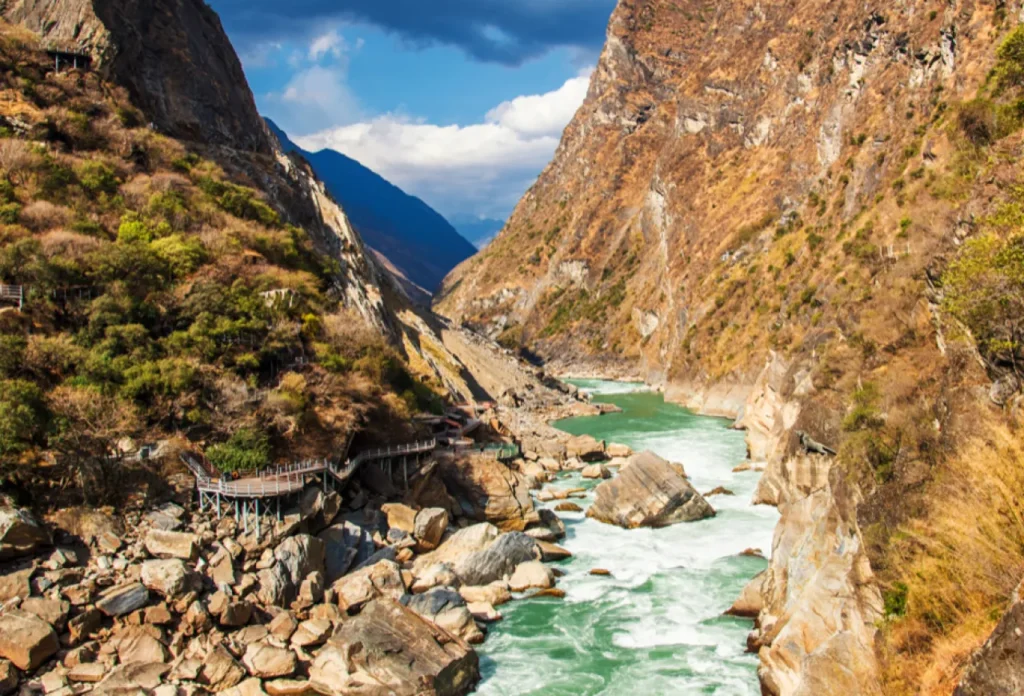
🗻 Depth: 3,900 meters (12,795 feet)
🌍 Location: China
📏 Length: 15 km (9 miles)
A Legendary Gorge in the Himalayas
Tiger Leaping Gorge, one of Asia’s most dramatic canyons, is a stunning chasm carved by the Yangtze River in southwestern China. The canyon is flanked by Jade Dragon Snow Mountain (5,596 meters/18,360 feet) and Haba Snow Mountain (5,396 meters/17,703 feet), creating a breathtaking landscape of towering cliffs and deep valleys.
The gorge gets its name from a Chinese legend, which tells the story of a tiger leaping across the river at its narrowest point (25 meters wide) to escape a hunter.
Apart from its mythical status, the canyon is a top trekking destination, attracting adventure seekers worldwide. The Tiger Leaping Gorge hiking trail offers epic viewpoints, waterfalls, and lush vegetation, making it one of China’s best outdoor experiences. The rugged terrain and steep cliffs make it a challenging but rewarding trek.
The local Naxi minority people inhabit the villages surrounding the gorge, offering cultural homestays for visitors. These communities still practice centuries-old traditions and agriculture, adding a historical and cultural dimension to this natural wonder.
7. Copper Canyon (Barranca del Cobre), Mexico
🗻 Depth: 1,879 meters (6,200 feet)
🌍 Location: Mexico
📏 Length: 60 km (37 miles)
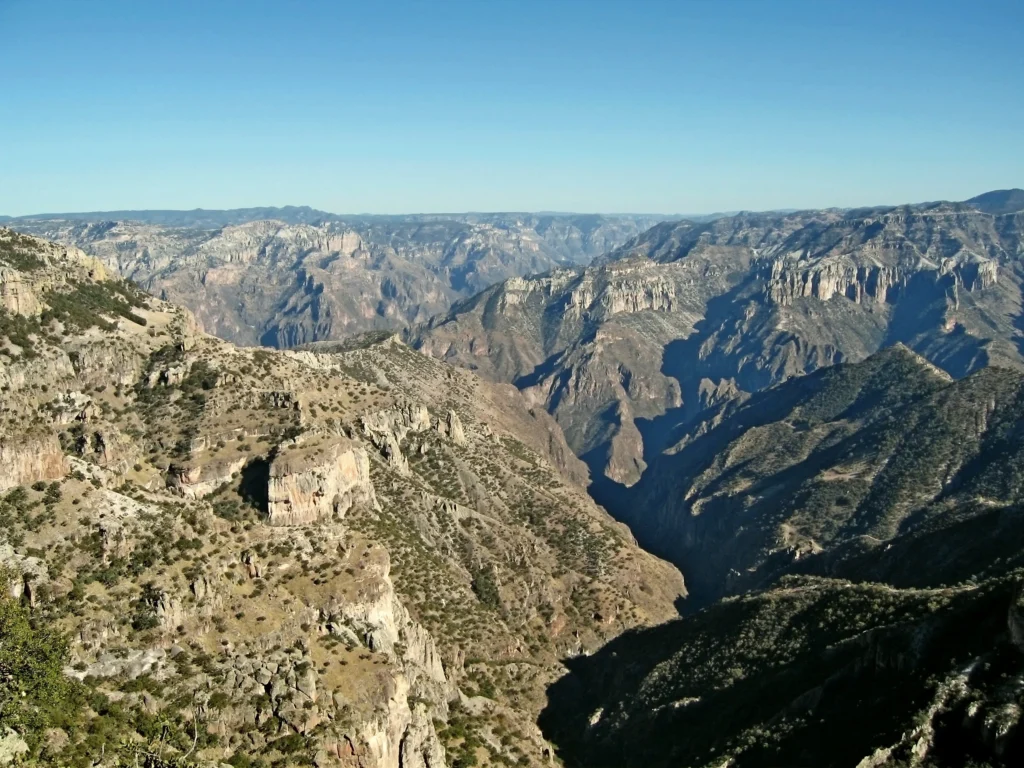
Larger and Deeper Than the Grand Canyon
While the Grand Canyon in the USA is world-famous, Mexico’s Copper Canyon is actually larger and deeper! This network of six interconnected canyons was carved by six different rivers, which later merged into the Rio Fuerte before emptying into the Gulf of California.
One of the most unique aspects of Copper Canyon is its lush greenery and biodiversity. Unlike the Grand Canyon’s arid desert landscape, Copper Canyon features forests, waterfalls, and tropical lowlands, creating a diverse ecosystem.
The canyon is home to the Rarámuri (Tarahumara) people, an indigenous group famous for their long-distance running abilities. Their culture remains deeply connected to the canyon’s rugged terrain, as they still practice traditional lifestyles, living in caves and small settlements.
One of the best ways to explore the canyon is via the Chihuahua al Pacífico Railway, a historic train route that offers breathtaking panoramic views as it winds through mountains, tunnels, and bridges. Copper Canyon is a hidden gem that combines adventure, culture, and natural beauty, making it one of Mexico’s most treasured landscapes.
8. Grand Canyon, USA
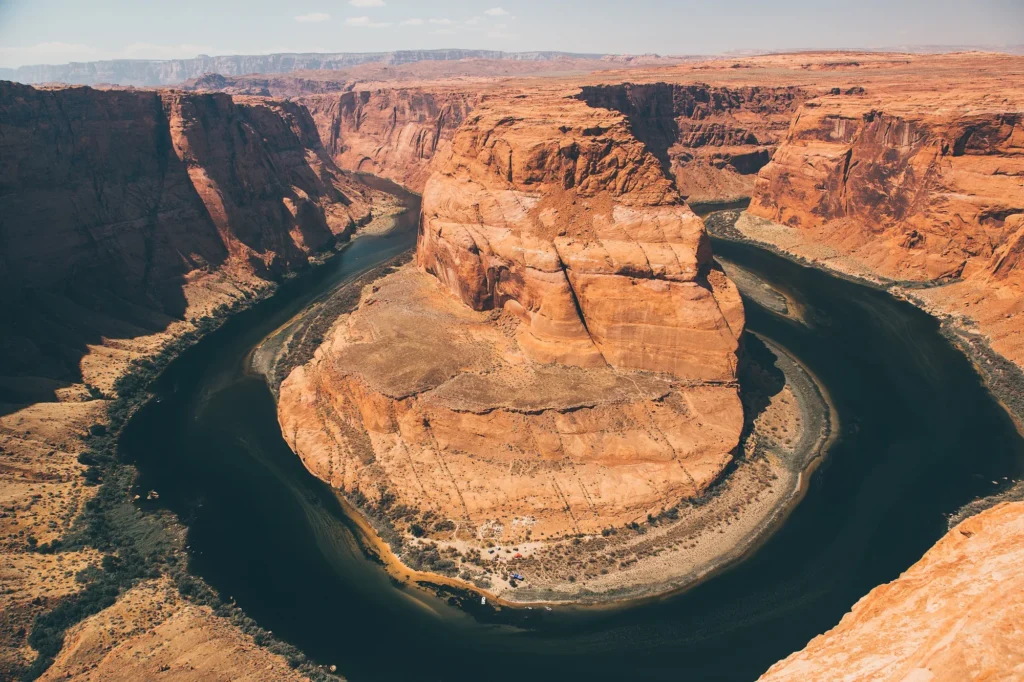
🗻 Depth: 1,857 meters (6,093 feet)
🌍 Location: Arizona, USA
📏 Length: 446 km (277 miles)
The Most Famous Canyon in the World
The Grand Canyon is perhaps Earth’s most iconic and widely recognized canyon. Carved by the Colorado River over millions of years, this natural wonder is not the deepest canyon but one of the largest and most geologically significant.
The canyon exposes nearly two billion years of Earth’s history, as its rock layers reveal ancient marine fossils, volcanic activity, and tectonic shifts. The Colorado River still flows through the canyon today, shaping this ever-evolving landscape.
One of the most breathtaking experiences at the Grand Canyon is watching sunrise or sunset as the canyon’s walls glow in red, orange, and purple hues. Popular viewpoints like Hopi Point, Desert View, and Mather Point offer stunning panoramas.
For adventure seekers, the Grand Canyon Skywalk—a glass bridge suspended over the canyon’s edge—provides a thrilling way to experience its dizzying depths. The hiking trails, including the Bright Angel Trail and South Kaibab Trail, lead deep into the canyon, offering unparalleled views and encounters with wildlife such as bighorn sheep and California condors.
The Grand Canyon is a UNESCO World Heritage Site and remains one of the most visited national parks in the world, attracting over 6 million visitors annually.
9. Fish River Canyon, Namibia
🗻 Depth: 550 meters (1,804 feet)
🌍 Location: Namibia
📏 Length: 160 km (99 miles)
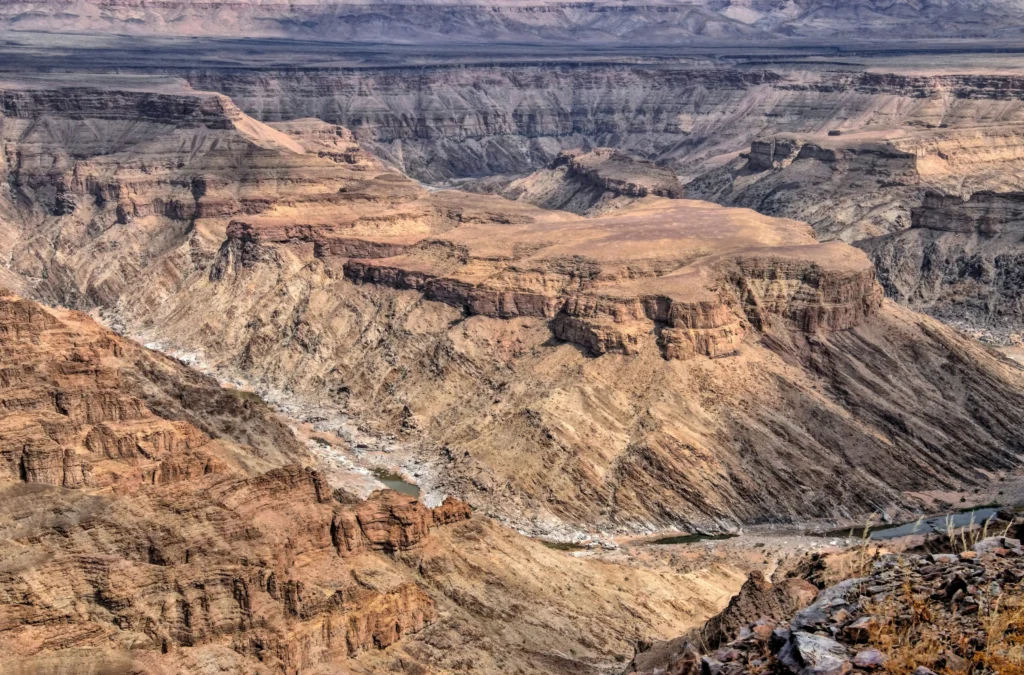
The Oldest Canyon in the World
While not the deepest, Fish River Canyon is Africa’s largest and oldest canyon, dating back 650 million years. Located in southern Namibia, this canyon was carved by the Fish River, which still winds through its rocky depths.
This canyon’s harsh, desert-like terrain makes it remarkable. Rough cliffs and dry riverbeds create a Martian-like landscape. The canyon’s unique geological history reveals ancient volcanic activity and glacial formations.
Fish River Canyon is best known for the Fish River Canyon Hiking Trail, one of Africa’s most challenging and rewarding treks. The multi-day, 85-km hike takes adventurers deep into the canyon, navigating rocky outcrops, natural hot springs, and dramatic cliffs.
Although the region is mostly arid, some wildlife, such as zebras, klipspringers, and baboons, thrive in this extreme environment. The canyon is also a paradise for stargazers, as the remote desert skies offer crystal-clear views of the Milky Way at night.
10. Tara River Canyon, Montenegro
🗻 Depth: 1,300 meters (4,265 feet)
🌍 Location: Montenegro
📏 Length: 82 km (51 miles)
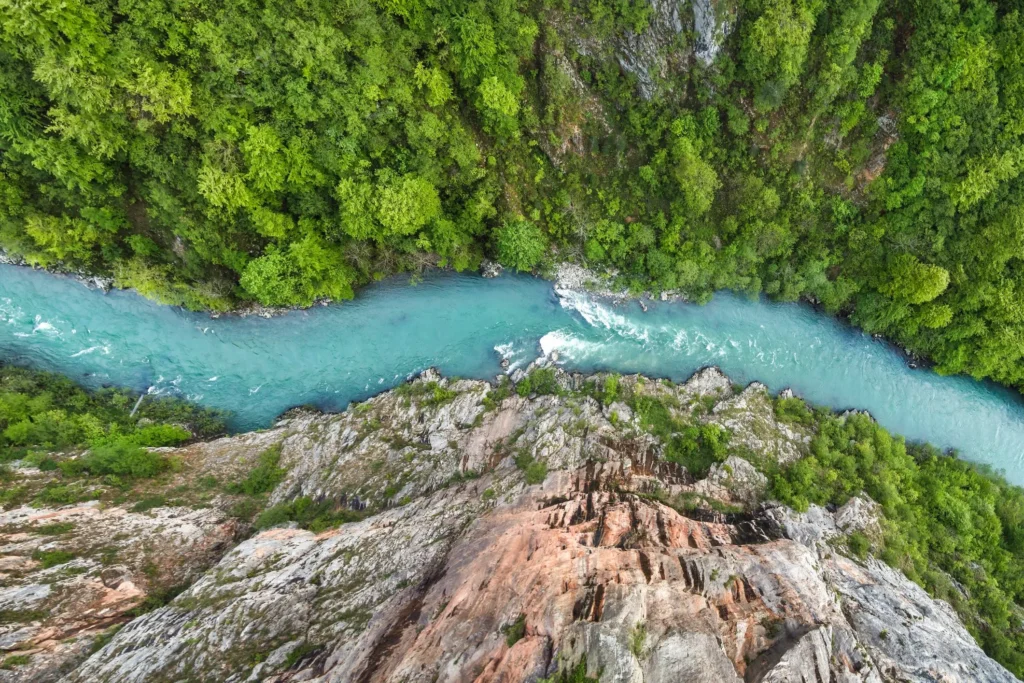
Europe’s Deepest Canyon
Located in the Balkan region of southeastern Europe, Tara River Canyon is the deepest canyon in Europe and one of Montenegro’s most spectacular natural attractions. Carved by the Tara River, this stunning gorge winds through Durmitor National Park, a UNESCO World Heritage Site.
What makes this canyon unique is its crystal-clear turquoise waters, which make it one of the best whitewater rafting destinations in the world. The Tara River rapids provide thrilling adventures for rafters, while the canyon’s steep limestone walls create a dramatic backdrop.
The Djurdjevica Tara Bridge, an iconic 1940s arch bridge, spans the canyon and offers breathtaking views.
Besides water sports, the canyon is also home to diverse wildlife, including brown bears, lynx, and golden eagles. Its dense forests and karst rock formations make it an ideal hiking destination.
For travelers seeking adventure, nature, and stunning European landscapes, Tara River Canyon is a hidden gem that deserves a spot on every explorer’s bucket list.
Fish River Canyon is a breathtaking and humbling experience for those who love off-the-grid adventures. It showcases the raw power of nature’s erosion.
🌍 Final Thoughts: Nature’s Greatest Masterpieces Beneath Our Feet
The 10 deepest canyons in the world are more than just geological formations—they are testaments to Earth’s incredible power, history, and beauty. These canyons tell the story of raging rivers carving through mountains, tectonic forces shaping landscapes, and civilizations thriving in their depths.
These natural wonders offer breathtaking views, rich biodiversity, and thrilling adventures, from the untamed Yarlung Tsangpo Grand Canyon to the majestic Colca Canyon.
Which of these awe-inspiring canyons would you love to explore? Share your thoughts in the comments below, and let’s celebrate nature’s greatest masterpieces together! 🌍⛰️🚀
References:
The following sources were used to research and compile this article on the 10 Deepest Canyons in the World:
- World Atlas – 10 Deepest Canyons in the World
- National Geographic – Canyon Formation and Geology
- Wikipedia – List of Deepest Canyons
FAQs:
1. Which is the deepest canyon in the world?
The Yarlung Tsangpo Grand Canyon in Tibet is the deepest canyon on Earth, plunging 6,009 meters (19,714 feet) into the Himalayan landscape.
2. Is the Grand Canyon the deepest canyon in the world?
No, while the Grand Canyon is famous, it ranks sixth in depth at 1,857 meters (6,093 feet). Canyons in Tibet, Nepal, and Peru are much deeper.
3. What is the oldest canyon in the world?
The Fish River Canyon in Namibia is one of the oldest, dating back 650 million years, formed by the erosion of ancient rock formations.
4. Can you visit all of these canyons?
Yes, most of these canyons are accessible to tourists for hiking, sightseeing, and adventure sports. Some, like the Yarlung Tsangpo Canyon, remain remote and challenging to explore.
5. What causes canyons to form?
Canyons are shaped by river erosion, tectonic activity, and volcanic processes, and they often take millions of years to form.


